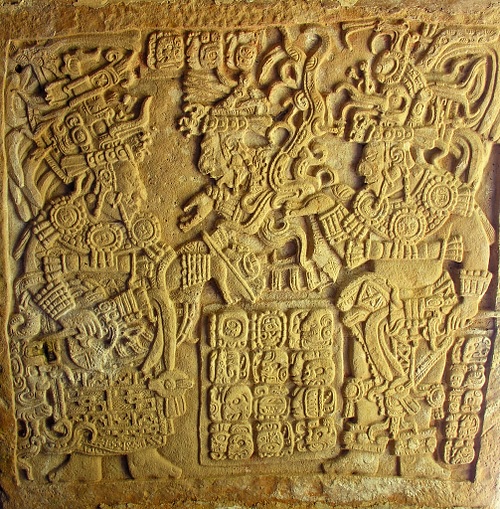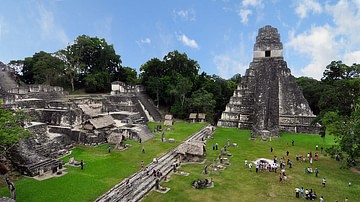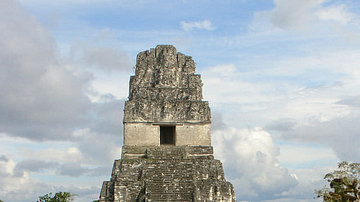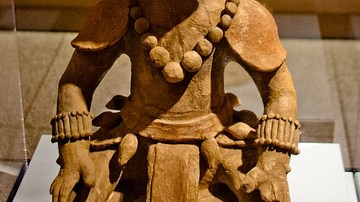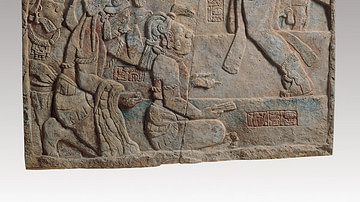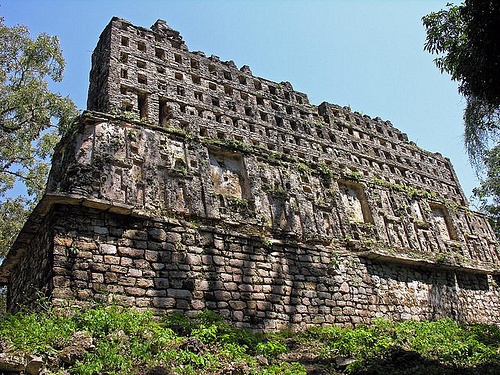
Yaxchilan, located on the banks of the Usumacinta River in the Yucatán peninsula of Mexico, was an important Late Classic Maya centre. The Maya dated the founding of their city to 320 CE, but Yaxchilan flourished between c. 580 and c. 800 CE, benefitting from commerce via the Usumacinta River and trading in copal resin and dyes processed from Brazil wood. Remains of stone pilings suggest the site once had a bridge or toll gate. Impressive in both architecture and sculpture, the site displays evidence of warfare before its collapse in the 9th century CE.
Unfortunately, the buildings of Yaxchilan have suffered from damage and erosion by floods over the centuries. However, further from the river are several small hills on the west and east sides upon which platforms and terraces were constructed. Much of the surviving architecture is in the Petén style, as seen at sites such as Tikal, and contact between the two sites is established through royal inter-marriages. In addition, narrow multiple entrances and ornate roof combs remind of Palenque.
One of the most impressive Petén-style buildings is the symmetrical Structure 33, built c. 750 CE, which is approached by a double platform with staircases and whose comb is supported by interior buttressing. The structure was built in honour of the mid-8th century CE Yaxchilan ruler Bird-Jaguar (ruled 752-768 CE) whose likeness appeared in stucco decorations in the centre of the building's roof comb. In front of the building is a carved stalactite which represents a sacred cave. Bird-Jaguar went on to expand Yaxchilan and constructed no fewer than eleven more buildings and 33 monuments.
Yaxchilan is also noteworthy for its sculpture, both on free standing stelae and on buildings, especially lintels where the scenes can only be seen from directly below. Early figures are depicted from the front and are relatively unremarkable, but from the mid-8th century CE figures are rendered in profile and designs become more dynamic, often framed by Maya glyphs. Stela 11 shows two standing figures in costume on the front, probably signifying the accession of the ruler Bird-Jaguar alongside his father and, in a quite different style, the reverse side again shows Bird-Jaguar, this time represented as the god Chahk, attacking three kneeling victims with his sceptre.
Scenes on limestone lintels, carved in high relief, typically portray rituals such as a worshipper drawing blood from his tongue in the presence of a priest and Bird-Jaguar standing over a kneeling captive. Another vivid scene, from Temple 23, shows a giant double-headed snake creature from the mouths of which emerge a warrior and the war and rain god Tlaloc, who both tower over a kneeling worshipper, identified as Lady Xok', wife of the Yaxchilan ruler Shield-Jaguar (r. 681-742 CE), who sees the monster in a blood-letting induced vision. This scene, as indicated by the glyphs, occurred on 23rd October 681 CE, the accession of Itzamnaaj Bahlam II, 'Shield Jaguar the Great'. Traces of red, greens, and yellows indicate that the panels were once brightly painted. These violent scenes are amongst the earliest to show such graphic episodes of religious life and conquest, although they would later become common in the art of the Toltec and Aztec civilizations.
